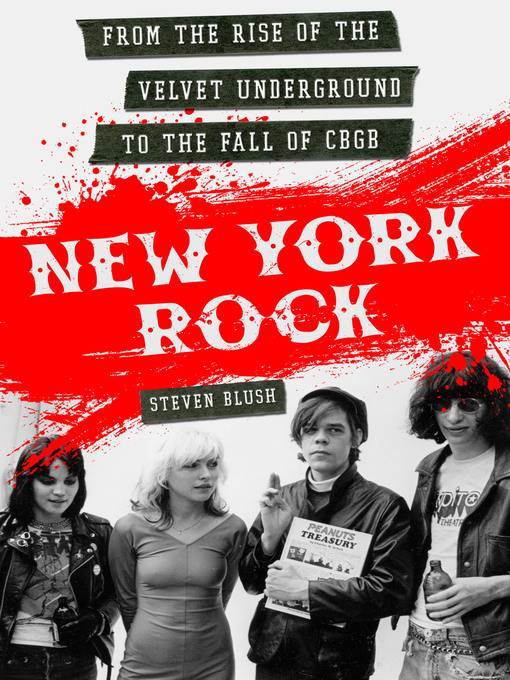
New York Rock
From the Rise of The Velvet Underground to the Fall of CBGB
کتاب های مرتبط
- اطلاعات
- نقد و بررسی
- دیدگاه کاربران
نقد و بررسی

July 11, 2016
The majority of this music history focuses on the already-well-documented scene at the legendary (now closed) venue CBGB in New York City, but its most interesting passages discuss the scenes that preceded and followed the punk movement. Blush, senior editor at Paper, has compiled a sweeping oral history of New York rock. The songwriting of Tin Pan Alley and the productions of the Brill Building provide the pop-centric context for the rise of the short and fast punk songs by groups like the Ramones. Scenes discussing the aftermath of the punk movement on disparate scenes throughout the city are highlights. The chapter on New York hardcore discusses the music created by young working-class musicians from Queens, and how their songs responded to a changing, gentrifying city in the 1980s and 1990s. At times, the book lacks focus and devolves into lists of bands. Blush’s work is sweeping in scope but lacks any central theme holding its different parts together. However, its contents provide an excellent starting point for those researching New York City’s music. Agent: James Fitzgerald, James Fitzgerald Agency.

Brisk overview of New York City's rock 'n' roll tradition, from doo-wop to hard core, mirroring the city's transformations.Former Seconds magazine publisher Blush (American Hair Metal, 2006, etc.) intuitively understands the rock scene's perpetual mechanics. His interviews with many key figures provide the core of this survey, in which he argues, "New York rock musicians and scenesters deserve way more credit than they've received." After discussing precedents like Tin Pan Alley songwriting, the author focuses on the cultural foment and urban decay of the 1970s. Moving beyond the era's punk explosion, Blush explores broader tales of musical innovation and competition against the scary backdrop of pre-Rudolph Giuliani NYC: "Noise rock achieved monumentality because of New York's monumentality--in this case, of something great gone to hell." Later, as neighborhoods gentrified and alternative rock took off, local bands tried to stand out; Blush asserts, " 'East Village Biker Rock' was different from the same era's Sunset Strip glam metal." Yet many interviewees agree that the city's creative vitality has been quashed, and in the 1990s, as one indie rocker notes, "everything got expensive." Blush concurs, explaining how "The Jewish Lower East Side became the alt-rock LES." The book is structured in support of this narrative, with chapters grouped by genre (e.g. "Glitter Rock," "No Wave") and then divided into "The Rise," "The Scene," "The Music," and "The Fall." In each, the author focuses on some representational acts and then briefly describes others that never moved beyond their scenes. Blush ably controls his sprawling narrative but depends too much on fragmentary quotes from scene personalities, which become repetitive, offering variations of one hard-core skinhead's recollection: "Back then it was so true, so street." Blush himself also falls into generic maxims--e.g. "The '90s were a tough time for rock music, and here were twentysomethings having sexy fun amid a decidedly no-fun era." A comprehensive yet pat and sometimes patchy tome that conveys a vicarious understanding of a gritty musical era. COPYRIGHT(1) Kirkus Reviews, ALL RIGHTS RESERVED.

Starred review from September 1, 2016
New York City rock and roll is tough and edgy but also has a flair for catchy hooks that dates back to the Brill Building, that breeding ground of songwriters, where Carole King and Neil Sedaka cut their teeth, and Lou Reed delivered his first single, The Ostrich. By the mid-1970s, white flight and urban decay had turned New York into a crime-ridden husk, but rents were cheap, and there were many possibilities for artists, musicians, and bohemians of all sorts. Out of this milieu sprang the most distinctive and original new styles of rock musicglam, glitter, punk, new wave, no wave, and hardcore each had a brief rise and fall. Whether it's well-known acts like Blondie and the Talking Heads or short-lived bands that sonically or literally assaulted the audience like Teenage Jesus and the Jerks and the Contortions, Blush gives them equal billing in this mix of chronological study and oral history that covers the late 1960s Warhol years to the early 2000s, when Hilly Kristal, owner of the iconic CBGB club, finally called it quits. Any band that was ever a blip on the radar is unearthed, and with such comprehensive coverage, the only disappointment is that your favorite band may garner only a paragraph.(Reprinted with permission of Booklist, copyright 2016, American Library Association.)

























دیدگاه کاربران